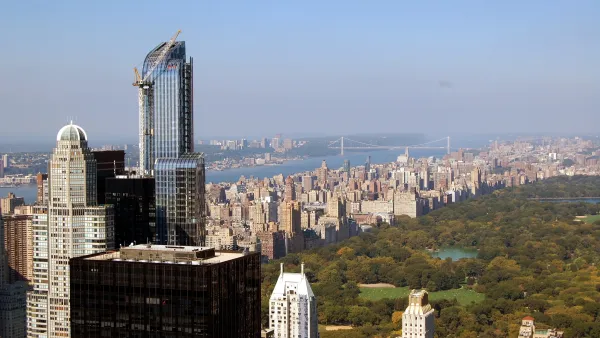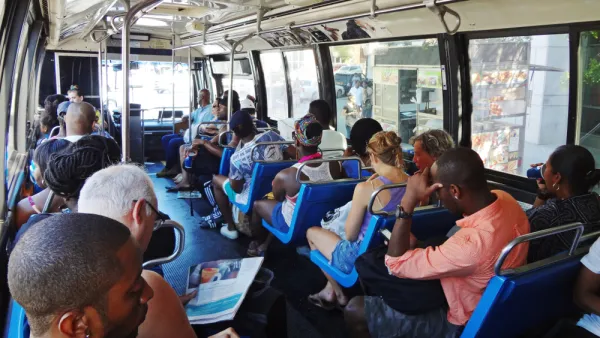For all those cities that double population during the work day, here's a revenue thought to consider. But why restrict it to in-bound commuters? What about residents who commute-out of the city? Is the commuter tax a legitimate revenue source?
While "New York City’s commuter tax expired more than a decade ago, political arguments for its revival continue to persist, as recently as last year’s mayoral election," writes Mike Maciag, data editor for Governing. But this revenue option is not limited to big cities.
"Last week, officials in Johnstown, Pa., which participates in a state program for distressed cities, told a panel of judges that they either needed to implement a commuter tax or scale back services. In Indiana, state legislators are mulling their own commuter tax for counties."
However, cities with the highest percentages of nonresident commuters in their workforce may not be what you think they are. See quiz questions below.
And the commuter tax need not be restricted to the conventional commuter. There could also be a "reverse commuter tax". Distressed areas could consider a related revenue stream for their residents who commute the opposite direction.
Buried deep in Detroit Emergency Manger Kevyn Orr’s restructuring plan released last month was a single line that caught the attention of one group of taxpayers. For the first time, the city publicly stated it was weighing an ordinance requiring employers to withhold city income taxes for reverse commuters.
So job-rich areas might tax non-residents who commute in, and job-poor cities could tax residents who commute out. However, it's the conventional commute tax that is considered the most "as property tax bases dwindle," writes Maciag. "Taken together, these two groups of taxpayers represent a largely untapped source of potential revenue that cities may begin to target more aggressively, particularly if they’re struggling."
Readers might wish to view "Governing's compiled data published for the Census Bureau’s American Community Survey to compute localities’ estimated nonresident workers. Across all cities with at least 50,000 workers, nonresidents accounted for slightly more than half – 52 percent – of the total workforce."
However, note that areas need not be incorportated, as is the case for the one in Fairfax County, Virginia, population 19,627, with the highest percentage of nonresident workers: 91.6%. Guesses anyone?
And here's a surprise - for me, anyway. Guess which cities in New York State had the highest and the lowest percentages of nonresidents in their workforce?
- White Plains
- Albany
- Rochester
- Syracuse
- Buffalo
- Yonkers
- New York
(Answer: It's numbered in descending order. New York City had 21.5%; White Plains, 81.2%)
FULL STORY: Cities Consider Taxing Commuters to Drive Up Revenue

Analysis: Cybertruck Fatality Rate Far Exceeds That of Ford Pinto
The Tesla Cybertruck was recalled seven times last year.

National Parks Layoffs Will Cause Communities to Lose Billions
Thousands of essential park workers were laid off this week, just before the busy spring break season.

Retro-silient?: America’s First “Eco-burb,” The Woodlands Turns 50
A master-planned community north of Houston offers lessons on green infrastructure and resilient design, but falls short of its founder’s lofty affordability and walkability goals.

Test News Post 1
This is a summary

Analysis: Cybertruck Fatality Rate Far Exceeds That of Ford Pinto
The Tesla Cybertruck was recalled seven times last year.

Test News Headline 46
Test for the image on the front page.
Urban Design for Planners 1: Software Tools
This six-course series explores essential urban design concepts using open source software and equips planners with the tools they need to participate fully in the urban design process.
Planning for Universal Design
Learn the tools for implementing Universal Design in planning regulations.
EMC Planning Group, Inc.
Planetizen
Planetizen
Mpact (formerly Rail~Volution)
Great Falls Development Authority, Inc.
HUDs Office of Policy Development and Research
NYU Wagner Graduate School of Public Service




























